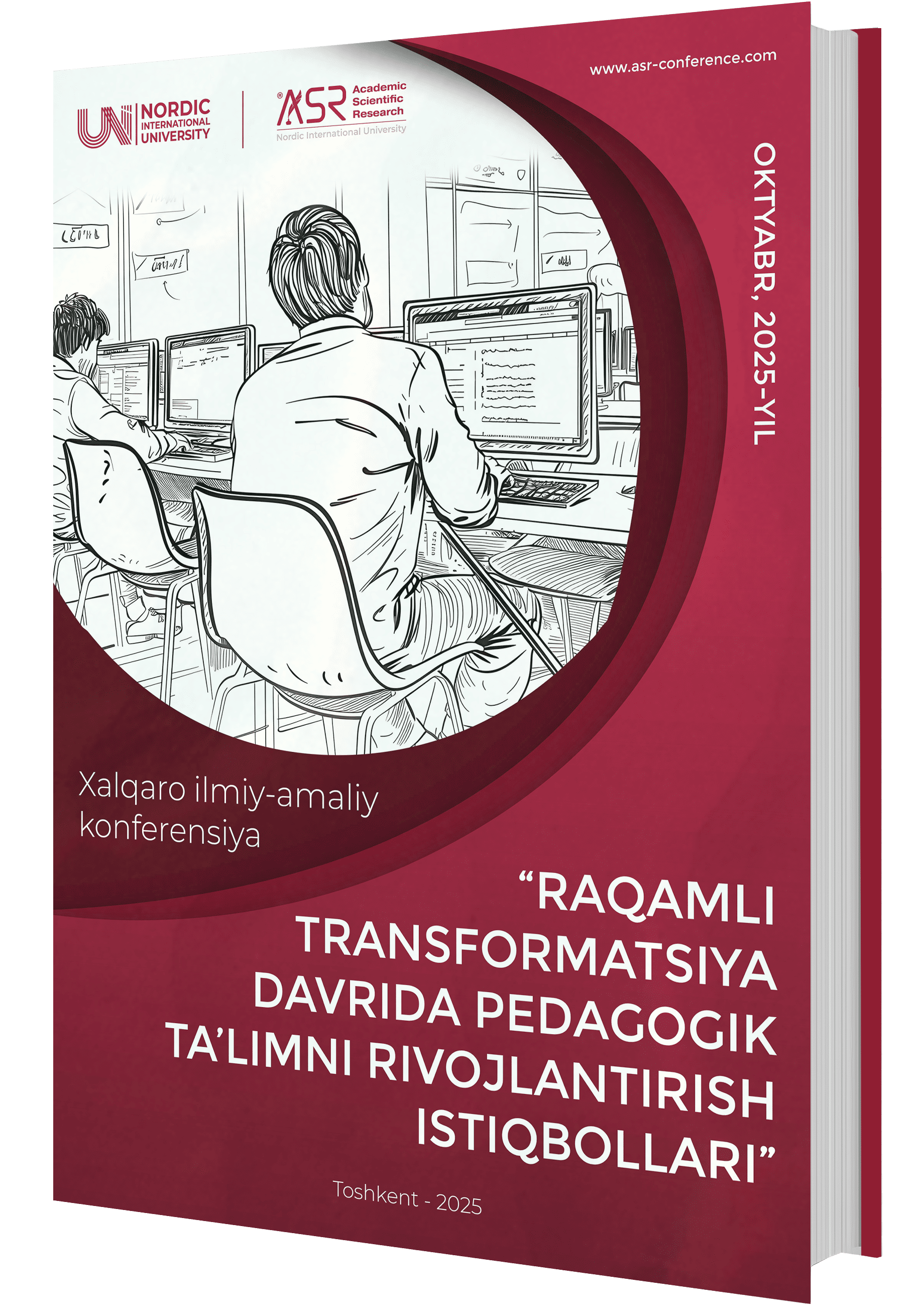STEM EDUCATION THROUGH PHET MODELING: A CASE OF TEACHING ATOMIC PHYSICS
Аннотация
The subject of physics, particularly the section on atomic physics, is a complex and significant field in explaining scientific foundations and intricate processes. To simplify such complexity and enhance students' understanding, the use of PhET interactive simulations is one of the effective solutions. This article explores the teaching of atomic physics topics within the STEM framework and the potential of PhET modeling. The central idea of this study is to determine the effectiveness of teaching atomic physics through the use of PhET modeling within the STEM education approach. This research aims to evaluate the effectiveness of using PhET simulations in teaching atomic physics through the STEM method. The study was conducted within the framework of pedagogical practice, during which simulations such as Rutherford Scattering, Hydrogen Atom, Blackbody Spectrum, and Fourier were used in the learning process. During the research, it was revealed that PhET models allow learners to be not just passive listeners, but active participants in the learning process.
Библиографические ссылки
Xie, Y., Fang, M., & Shauman, K. (2015). STEM Education. Annual Review of Sociology, 41, 331–357. https://doi.org/10.1146/annurev-soc-071312-145659
Li, Y., Schoenfeld, A. H., diSessa, A. A., Graesser, A. C., Benson, L. C., English, L. D., & Duschl, R. A. (2019, April 15). On Thinking and STEM Education. Journal for STEM Education Research. Springer Nature. https://doi.org/10.1007/s41979-019-00014-x
Khaeruddin, K., & Bancong, H. (2022). STEM education through PhET simulations: An effort to enhance students’ critical thinking skills. Jurnal Ilmiah Pendidikan Fisika Al-Biruni, 11(1), 35–45. https://doi.org/10.24042/jipfalbiruni.v11i1.10998
Perkins, K. (2020). Transforming STEM Learning at Scale: PhET Interactive Simulations. Childhood Education, 96(4), 42–49. https://doi.org/10.1080/00094056.2020.1796451
Lestari, R. P. (2018). Pengembangan LKPD Berbantu Phet Simulation Berbasis STEM-PBL Untuk Meningkatkan Penguasaan Konsep dan Keterampilan Memecahkan Masalah Peserta Didik SMA. Journal of Chemical Information and Modeling, 53(9), 1689–1699.
Yusuf, I., & Widyaningsih, S. W. (2019). HOTS profile of physics education students in STEM-based classes using PhET media. In Journal of Physics: Conference Series (Vol. 1157). Institute of Physics Publishing. https://doi.org/10.1088/1742-6596/1157/3/032021
Yunzal, Jr., A. N., & Casinillo, L. F. (2020). Effect of Physics Education Technology (PhET) Simulations: Evidence from STEM Students’ Performance. Journal of Education Research and Evaluation, 4(3), 221. https://doi.org/10.23887/jere.v4i3.27450
Stanescu, M. M. (2020). Exploring Interactive Simulations as a Powerful Tool in STEM-PBL Approach in Physics. European Scientific Journal ESJ, 16(21). https://doi.org/10.19044/esj.2020.v16n21p1
Blackbody Spectrum https://phet.colorado.edu/en/simulations/blackbody-spectrum (accessed on: April 3, 2025)
Rutherford Scattering https://phet.colorado.edu/en/simulations/rutherford-scattering (accessed on: April 3, 2025)
Fourier: Making Waves https://phet.colorado.edu/en/simulations/fourier-making-waves (accessed on: April 3, 2025)
Загрузки
Опубликован
Выпуск
Раздел
Лицензия
Copyright (c) 2025 Yelmurat DOSYMOV , Selda ESER , Almagul UALIKHAN , Serik POLATULY

Это произведение доступно по лицензии Creative Commons «Attribution-NonCommercial» («Атрибуция — Некоммерческое использование») 4.0 Всемирная.
Условия лицензии
Эта работа доступна под лицензией Creative Commons Attribution-NonCommercial 4.0 International License. Чтобы просмотреть копию этой лицензии, посетите http://creativecommons.org/licenses/by-nc/4.0/ или отправьте письмо по адресу Creative Commons, PO Box 1866, Mountain View, CA 94042, США.
По этой лицензии вы можете:
Поделиться — копируйте и распространяйте материал на любом носителе и в любом формате.
Адаптируйте — делайте ремиксы, трансформируйте и дорабатывайте материал.
Лицензиар не может отозвать эти свободы, если вы соблюдаете условия лицензии. На следующих условиях:
Атрибуция. Вы должны указать соответствующую ссылку, предоставить ссылку на лицензию и указать, были ли внесены изменения. Вы можете сделать это любым разумным способом, но не таким образом, который бы предполагал, что лицензиар одобряет вас или ваше использование.
Некоммерческое использование — вы не имеете права использовать материал в коммерческих целях.
Никаких дополнительных ограничений. Вы не имеете права применять юридические условия или технологические меры, которые юридически запрещают другим делать все, что разрешено лицензией.





